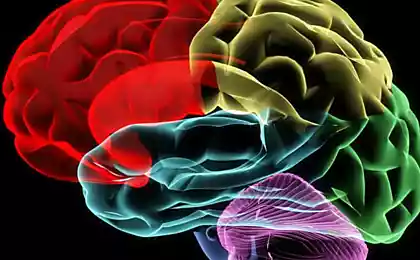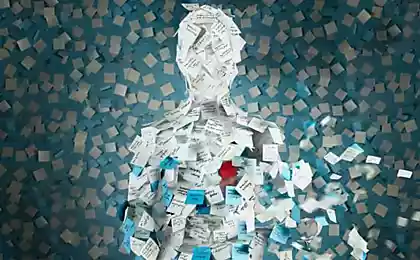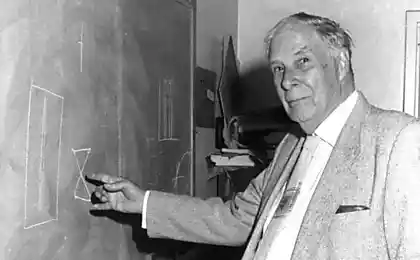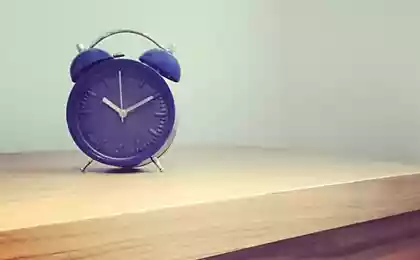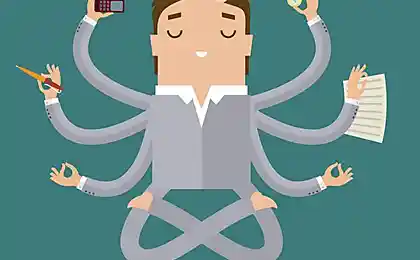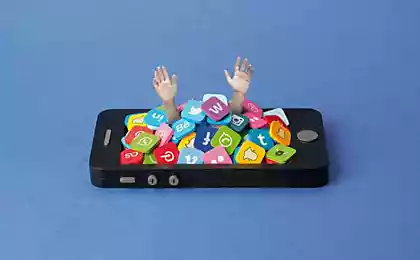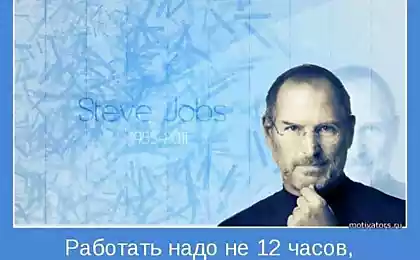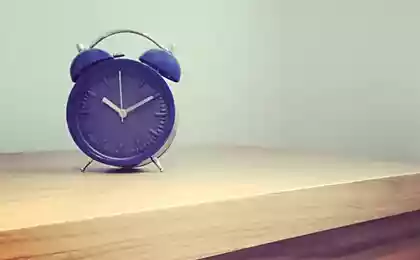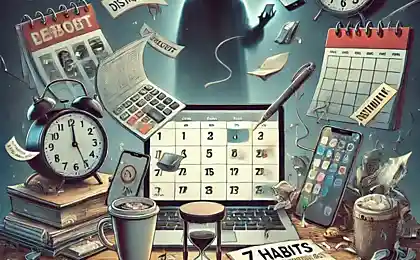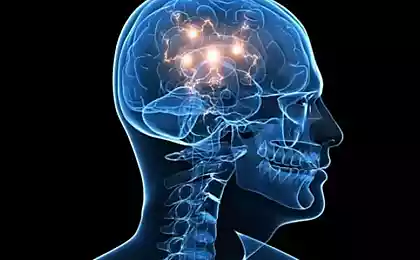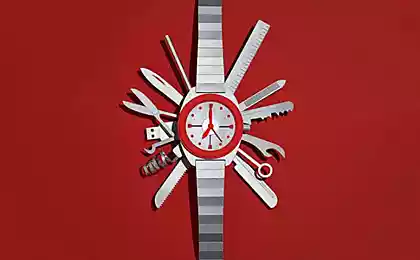153
The Popcorn Brain: Why You Switch From One Task to Another

Visualization of the “popcorn brain” – a state of constant switching of attention
You start writing an important letter, but after a minute you check the notifications on your phone. You go back to the letter, but suddenly you remember an unread article. Open the browser, see interesting advertising and click on the link. After half an hour of such switching, you realize that the letter has not been written. Familiar? Welcome to the popcorn brain club.
What is the “popcorn brain” and why it captures our attention
The term “popcorn brain” first appeared in the psychological literature in the early 2010s to describe the phenomenon of constant shifting of attention, reminiscent of the random jumping of grains in the preparation of popcorn. This is not an official medical diagnosis, but a metaphor for a particular type of cognitive behavior characteristic of the digital age.
Neurobiological studies show that the modern human brain has adapted to the constant flow of new information and microdoses of dopamine produced by receiving new notifications, likes and messages. This led to the formation of a new norm – constant information surfing instead of deep immersion in tasks.
Signs of the "popcorn brain":
- Difficulty retaining attention on one task for more than 5-10 minutes
- Compulsive testing of devices without real need
- Feeling anxious about not having access to digital devices
- Multitasking as a permanent mode of work
- Superficial thinking instead of deep analysis
- Loss of ability to enjoy slow activities (book reading, walking)
From entertainment to neurochemical addiction
Over the past decade, the number of digital stimuli has grown exponentially. The average smartphone user checks the device about 150 times a day. Each of these microinteractions causes a small release of dopamine, a neurotransmitter of pleasure and reward.
Cognitive psychologist Adam Gazzali has found in his research that our brains actually “reconfigure” to constantly receive these mini-doses of dopamine, which creates a stable pattern of behavior, very similar to addiction. Unlike classical addictions, the popcorn brain is socially acceptable and even encouraged in today’s multitasking culture.

Neuroimaging of the brain during concentration and with “popcorn” mode
Why the “popcorn brain” is dangerous: the consequences for life
List of negative consequences:
- Decreased productivity Studies show that after each interruption, it takes up to 23 minutes to fully return to the task.
- Memory impairment Constant switching interferes with the formation of long-term memories
- Surface thinking Loss of ability for deep analysis and creative solutions
- Emotional burnout The brain is in a constant state of overexcitation
- Degradation of social skills The quality of personal communication decreases due to the inability to focus on the interlocutor.
- Chronic fatigue Constant switching requires significant energy consumption
According to a University of London study, persistent multitasking can reduce IQ by 10 points, equivalent to a sleepless night or exposure to marijuana. Other studies have linked the “popcorn brain” to increased levels of stress and anxiety.
The Neurophysiology of the Popcorn Brain: What Happens Inside
The phenomenon of the “popcorn brain” is based on three key neurophysiological mechanisms:
1. dopamine cycle
When new information or notification is received, dopamine is released, creating a sense of pleasure. Over time, dependence on these neurotransmitter microdoses is formed. When a person tries to concentrate on one task, the brain begins to experience dopamine starvation, which causes anxiety and forces them to seek new stimulation.
2. Weakening of the prefrontal cortex
The prefrontal cortex is responsible for executive functions, including concentration and suppression of impulses. Constant switching between tasks depletes this area of the brain, reducing our ability to consciously control attention.
3. Neuroplasticity and habit formation
The brain adapts to frequent switching, creating new neural connections optimized for fast but superficial information processing, instead of slower but deeper analytical processes.
“Multi-tasking is a myth. The brain doesn’t do several things at once, it switches between tasks quickly, and each such switch has a cognitive cost. — Daniel Levitin, Professor of Neurosciences, author of The Organized Mind
Strategies to Restore Concentration: Practical Solutions
Fortunately, thanks to the neuroplasticity of the brain, it is possible to reverse the negative effects of the “popcorn brain”. Here are some science-based strategies:
1. Time Blocking (Time Blocking)
Divide the workday into blocks of 25-90 minutes dedicated to one specific task. During each block completely eliminate distractions. Make short breaks between blocks. This approach is consonant with the popular Pomodoro technique, but adapted to the individual characteristics of concentration.
2. Digital detox
Include in your schedule periods (from a few hours to a few days) when you completely disconnect from digital devices. Studies show that even short periods of digital detox significantly improve concentration and reduce anxiety.
3. Teaching deep attention
Practice daily activities that require sustained attention: reading paper books, meditation, drawing, or playing musical instruments. Start with 10 minutes and gradually increase the duration.
4. Notification management
Turn off all unimportant notifications on all devices. Create a system to filter incoming information by setting a specific time to check emails and messages (e.g., twice a day).
5. One-screen technique
Work with only one application on the screen, closing all other tabs and programs. Research shows that visible icons and notifications create a cognitive load, even if you are not actively interacting with them.

Meditation and mindfulness practices help restore concentration
Making changes in everyday life
Overcoming the “popcorn brain” is not a momentary action, but a gradual process of changing habits. Here is a step-by-step action plan:
Concentration recovery plan (21 days):
- Days 1-3: Audit your digital behavior. Install an app to track screen time and analyze how often you switch between tasks.
- Days 4-7: Enter a two-hour period of "deep work" daily. Turn off all notifications and work on just one task.
- Days 8-14: Expand your practice to half a working day. Add a daily 15-minute meditation to strengthen the neural pathways responsible for concentration.
- Days 15-21: Implement a complete system of time blocks for the entire working day. Set aside one day off for a full digital detox.
It is important to understand that the brain will resist change. In the initial stages, you may experience anxiety, irritability, or even withdrawal symptoms. This is a normal reaction that usually goes away after 7-10 days of regular practice.
Technology vs. Technology: Digital Solutions
It is noteworthy that technology can not only create a problem, but also help in solving it. There is a whole class of applications created to combat digital congestion:
- Freedom and Forest Block distracting sites and apps for a certain period
- Headspace and Calm Offer directed meditations to train attention
- RescueTime and Toggl Analyze time use and help identify unproductive patterns
- Focus@Will Offers neuroacoustic music specifically designed to improve concentration
The phenomenon of the “popcorn brain” is not just a fashionable concept, but a real change in the work of our brain under the influence of the digital environment. Constant shifting of attention reduces our productivity, interferes with creative thinking and negatively affects emotional well-being. However, the neuroplasticity of the brain allows us to change these patterns.
The key to solving the problem is not to completely abandon technology, but to create conscious habits of using it. By combining attention management techniques, deep working techniques, and periodic digital detox, we can restore our ability to focus deeply without giving up the benefits of modern technology.
Ultimately, the goal is not to become a digital hermit, but to learn to master your attention in a world of endless distractions.
Glossary
Popcorn brain is a metaphorical description of the state of the brain in which a person constantly switches between tasks and sources of information, just as popcorn grains bounce.
Dopamine is a neurotransmitter (a chemical in the brain) associated with reward system, motivation, and pleasure. It plays a key role in the formation of dependencies.
Neuroplasticity is the ability of the brain to change its structure and function in response to experience, learning, and external influences.
The prefrontal cortex is an area of the brain responsible for complex cognitive functions, including planning, decision-making, and impulse control.
Time Blocking is a time management technique in which the day is divided into blocks, each dedicated to a specific task or activity.
Digital detox is a period of voluntary abstinence from using digital devices and technologies to reduce stress and restore a healthy balance.
Cognitive load is the amount of mental resources required to perform a specific task or process information.
Deep Work is a concept developed by Professor Cal Newport that describes a state of complete concentration on a cognitively complex task without distractions.
What is cluster thinking and how not to give in to false choices
5 science fiction novels written by real scientists
